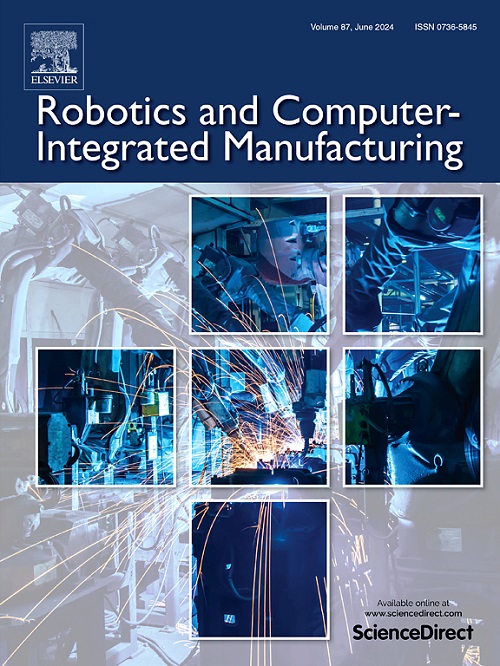A novel production execution logic model with directed service node pairs and encapsulated service cells for efficient scheduling and simulation in discrete manufacturing shops
IF 11.4
1区 计算机科学
Q1 COMPUTER SCIENCE, INTERDISCIPLINARY APPLICATIONS
引用次数: 0
Abstract
In discrete manufacturing shops, dynamic uncertainty disturbances necessitate frequent scheduling and simulation, posing significant challenges to the efficiency of traditional methods. Therefore, effective production execution logic models are required to manage these dynamics and enhance the efficiency of scheduling and simulation. However, existing production execution logic models lack comprehensive integration of flows of information, control, and material (FICM), making it difficult to effectively describe the dynamic production execution logic and limiting their ability to optimize scheduling and simulation processes. To address this challenge, by extending the seven-elements (SE) and material node-oriented seven-elements (MNOSE) models, this paper proposes a production execution logic model with directed service node pairs and encapsulated service cells (PELM-DaE). The model achieves the representation and integration of FICM, enabling an effective description of dynamic production execution logic. Based on PELM-DaE, a method for constructing connectivity maps is proposed, which allows the characterization of job execution relationships and constraints and the pre-computation of FICM. Additionally, by dynamically constructing and continuously applying connectivity maps, a connectivity map-based framework is proposed to support efficient scheduling and simulation. Based on the above research content, a software platform is developed to implement the encapsulation of the proposed model and method. The practicality and advantages of the model and method in describing the production execution logic and improving the efficiency of scheduling simulation are verified based on an actual manufacturing shop floor.
针对离散制造车间的高效调度和仿真问题,提出了一种具有定向服务节点对和封装服务单元的生产执行逻辑模型
在离散制造车间中,动态不确定性干扰需要频繁的调度和仿真,这对传统方法的效率提出了重大挑战。因此,需要有效的生产执行逻辑模型来管理这些动态,提高调度和仿真的效率。然而,现有的生产执行逻辑模型缺乏信息流、控制流和信息流(FICM)的综合集成,难以有效描述动态的生产执行逻辑,限制了其优化调度和仿真过程的能力。为了解决这一挑战,本文通过扩展七元素(SE)和面向材料节点的七元素(MNOSE)模型,提出了一个具有定向服务节点对和封装服务单元(PELM-DaE)的生产执行逻辑模型。该模型实现了FICM的表示和集成,实现了对动态生产执行逻辑的有效描述。在PELM-DaE的基础上,提出了一种构建连接映射的方法,该方法可以表征作业执行关系和约束,并实现FICM的预计算。此外,通过动态构建和持续应用连接图,提出了一种基于连接图的框架,以支持高效的调度和仿真。在上述研究内容的基础上,开发了一个软件平台来实现所提出的模型和方法的封装。通过实际生产车间的实例验证了该模型和方法在描述生产执行逻辑、提高调度仿真效率方面的实用性和优越性。
本文章由计算机程序翻译,如有差异,请以英文原文为准。
求助全文
约1分钟内获得全文
求助全文
来源期刊
CiteScore
24.10
自引率
13.50%
发文量
160
审稿时长
50 days
期刊介绍:
The journal, Robotics and Computer-Integrated Manufacturing, focuses on sharing research applications that contribute to the development of new or enhanced robotics, manufacturing technologies, and innovative manufacturing strategies that are relevant to industry. Papers that combine theory and experimental validation are preferred, while review papers on current robotics and manufacturing issues are also considered. However, papers on traditional machining processes, modeling and simulation, supply chain management, and resource optimization are generally not within the scope of the journal, as there are more appropriate journals for these topics. Similarly, papers that are overly theoretical or mathematical will be directed to other suitable journals. The journal welcomes original papers in areas such as industrial robotics, human-robot collaboration in manufacturing, cloud-based manufacturing, cyber-physical production systems, big data analytics in manufacturing, smart mechatronics, machine learning, adaptive and sustainable manufacturing, and other fields involving unique manufacturing technologies.

 求助内容:
求助内容: 应助结果提醒方式:
应助结果提醒方式:


